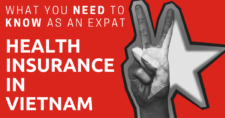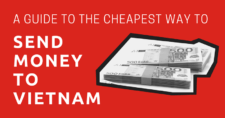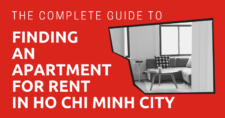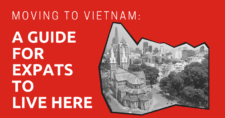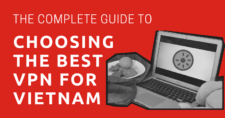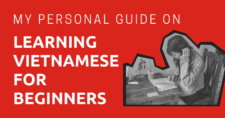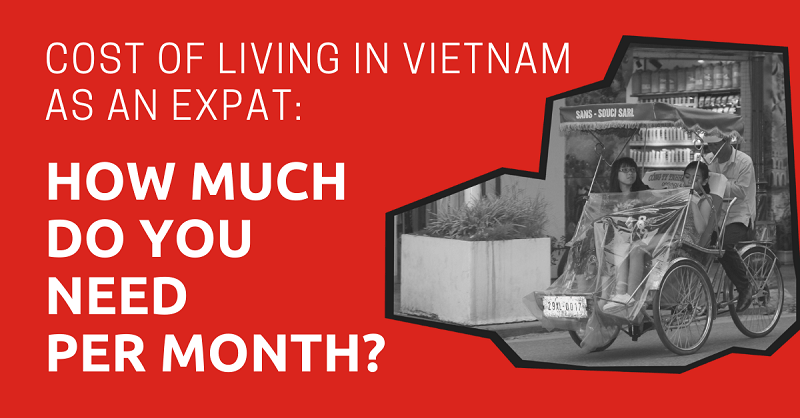
Possibly the most famous (infamous?) perk of living in South East Asia is the cost of living, and Vietnam is no exception. If you’re used to living in a first-world country, the idea of only needing to spend $2 for a meal and $300 for rent is probably a dream come true.
It goes without saying, then, that you can survive in Vietnam on a much smaller budget than in many other countries – but that doesn’t mean budgeting isn’t important. Opinions differ widely in how much money you need to get by.
I’ve met some who have told me you can live on a little over 12 million vnd per month (About $522 usd), and others who wouldn’t accept anything less than 50 million ($2,175).
In truth, both are correct – but the difference lies in your lifestyle, your location, and whether or not you plan to save any money.
This article will take approximately 23 minutes to read. Don't have the time right now? No worries. You can email the ad-free version of the article to yourself and read it later!
Disclaimer: This article may include links to products or services offered by ExpatDen’s partners, which give us commissions when you click on them. Although this may influence how they appear in the text, we only recommend solutions that we would use in your situation. Read more in our Advertising Disclosure.
Contents
What Are Going To Be Your Major Expenses?
As in anywhere else in the world, a considerable portion of your budget will need to be spent on your basic living costs: Rent, food, water, electricity, transportation, phone bills, etc. Let’s break these down now.
Depending on your choices here you could be spending anywhere between 5 million to 40 million ($220 to $1760) (or even higher!).
Before we go further, it’s worth mentioning that many urban Vietnamese people live reasonably well on around 6 million dong (~$260) per month. They’re not scraping by, either – these people have motorbikes, phones, go out for food and drinks with their friends, and even save some money on the side.
If it’s possible for them, it’s possible for you, right?
Well, sort of. With some significant exceptions (most notably rent), you too can survive on a Vietnamese budget, provided you’re willing to live a Vietnamese lifestyle. We’ll be exploring a wide range of options – from the absolute bare minimum to the lavish and unnecessary – throughout this article.
Rent
Like most things in this country, rent is cheap. The urban centres are developing rapidly with few restrictions on construction, leading to low housing prices and low rent as a consequence.
Unfortunately, rent is somewhat higher for foreigners, as there are additional costs associated with having foreigners live on your property legally.
A small studio apartment in Saigon or Hanoi can go as low as 5 million ($220) monthly, but won’t be particularly high-quality. If you’re willing to spend a bit more, 10-12 million ($440 – $525) will get you a spacious and modern serviced one-bedroom apartment in a prime location.
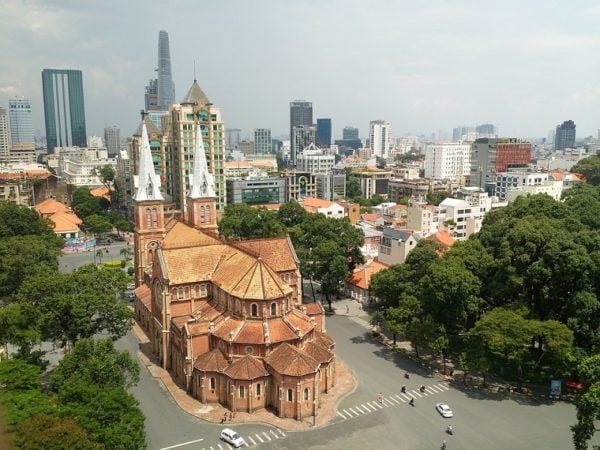
The rent is even lower in the smaller cities – if you live in a smaller city such as Hạ Long you can get a serviced two bedroom apartment with a sea view for as low as 6 million ($265), although these prices are not standard.
If you’re on a tight budget you can get a small air conditioned studio for as low as two million ($90).
If you’d prefer your own detached house, this is also an option – although the prices go up significantly. A house with a garden in a good district can cost you 34 million ($1500) on the low end, and upwards of 70 million ($3100) on the high end.
Utilities
The price of electricity and water is pretty much constant throughout the country. You can expect to be spending between 1 and 2 million ($45 – $90) per month on electricity, depending on how much you use the air conditioning, while water is about 100k ($4.40).
One thing you might need to keep in mind is that Vietnamese tap water is unsafe to drink, making bottled water a necessity. You may well need to spend another 100k ($4.40) monthly on safe drinking water.
Food
The cost of food in Vietnam depends on what you eat. Street food is extraordinarily affordable. Cooking yourself is a bit more expensive. Foreign and fancy restaurants even more so.
Vietnamese street food is famously cheap, and famously excellent. A full meal in a cheap restaurant – be it phở, fried rice, bún bò huế, etc – almost always costs between 20k and 40k vnd ($0.85 – $1.70).
If you need something even cheaper, a reasonably sized streetside bánh mì sandwich, stuffed bánh bao or sticky-rice ball can be easily found for 10k (although the quality won’t be anything to write home about) ($0.45).
As such, if you have a bánh mì for breakfast, a bowl of phở for lunch, and fried rice for dinner, you’ll be spending 80k (around $3.5) per day on food – or $105 per month – without ever having to cook.
Having said that, not everyone can handle exclusively eating Vietnamese street food.
A meal at a regular foreign restaurant typically costs between 80k ($3.50) and 150k ($6.60), and at a fancy restaurant can reach up to 300k ($13.15). If you, like many foreigners who live here, go to or order from a western restaurant nearly every night, you can expect to spend more than 6 million ($265) on food monthly.
If you prefer to stay at home, delivery is between 20k and 40k, depending on distance.
Drink
Alcohol is, unsurprisingly, quite cheap. A bottle of local beer at a restaurant will rarely cost you more than 30k, and between 10 – 20k ($0.45 to $0.90) from a shop. As such, even a heavy drinker will find it difficult to make drinking a significant chunk of their budget.
Wine is also available in Vietnam, but substantially more expensive – a bottle of Vietnamese wine will cost you around 200k ($8.80), whereas imported wine is upwards of 400k ($17.55).
A little known fact about Vietnam is that it is the second largest producer of coffee globally, after Brazil.
As such, Vietnamese coffee is available on every street at a reasonable price. A cup of the famous cà phê sữa đá will cost you about 20k ($0.90) at a regular cafe, but if you’re craving western or espresso-based coffee, you can pay between 40-60k ($1.75 – $2.65) at a more fancy coffee shop.
Transportation
Let’s take a look at the cost of transportation in Vietnam.
Motorbikes
Motorbikes and scooters are the predominant method of transportation in Vietnam, and after having lived here for a while, it’s not difficult to understand why. Motorbikes are vastly superior to cars in terms of cost, fuel-efficiency, convenience, and speed.
You can rent an automatic scooter – most typically a Yamaha Nuovo – for between 500k ($22) to 800k ($35) per month, although these are notoriously unreliable machines and I’d strongly recommend you either buy a different bike or learn to ride a semi-automatic or manual instead.
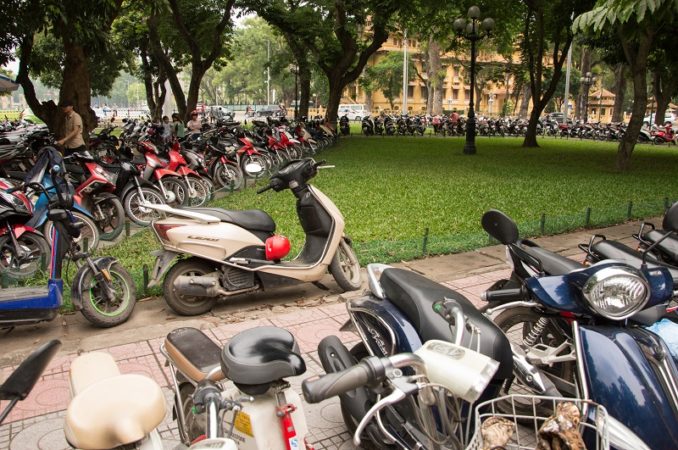
If cost and reliability are your primary concerns you can buy a Honda Dream or Honda Wave for around 7 million dong ($305) used or 17 million ($746) new. Both of these bikes are famously durable semi-automatics, and can be fixed at a low cost at any streetside repair shop.
More expensive bikes are available depending on your needs. If you need an automatic with a lot of storage space, you can get a Honda Lead for upwards of 15 million ($660) used, or 38 million ($1670) new.
For those who want to drive a fast and agile manual, the Yamaha Exciter and Honda Winner X are available for around 25 million ($1100) used and 45 million ($1975) new.
Grab and Taxis
Few people are willing to jump straight on their own motorbike as soon as they arrive in Vietnam, instead opting to use apps to call motorcycle taxis, the most famous such app being Grab.
Grab is cheap enough to be your primary form of transportation if you need it, although over time will become significantly more expensive than having your own bike. Since the prices vary dramatically with location, time, and weather, it’s hard to give a solid estimate – but a 15 minute grab ride can cost between 20k ($0.90) and 60k ($2.64) depending on conditions.
If you’re travelling for 30 minutes every day, you could be spending around 3 million ($130) on grabs per month.
If it’s raining, extremely hot, or you’re travelling in a group, or you’re concerned about safety, another option is to book a car-taxi. These are substantially slower (especially during rush hour) and more expensive, at around 3x the cost of the same trip by bike – that is, you could be expecting to pay 150k ($6.60) and upwards for your commute.
Bus
Of course, by far the cheapest and safest option in any scenario is to catch a bus. If you can tolerate the inconvenience and discomfort, you can catch a bus from anywhere to anywhere else for 5-10k ($0.22 – $0.44), making it ideal for someone on a budget.
Healthcare
There are essentially three different forms of healthcare available to you as a foreigner in Vietnam: Public, private, and international. Your choice should depend on your budget and how much you trust the Vietnamese healthcare system.
Public
All employers in Vietnam must provide their employees with public healthcare insurance. As such, so long as you are legally working in Vietnam you will have subsidised access to Vietnam’s large number of public hospitals. Visiting these hospitals should be affordable to just about anybody – a GP consultation at Hanoi’s Bạch Mai hospital can be as cheap as 70k ($3.10), and seeing a highly trained specialist is around 500k ($22).
Despite being cheap, the doctors at these hospitals are all well-trained professionals with access to reasonably good equipment.
Private
If the prospect of having to spend weeks in a cramped hospital room shared with 7 other people scares you, Vietnam’s private hospitals are an alternative. The quality of medical care is roughly the same, although you can expect much cleaner and more comfortable facilities and shorter waiting times.
Private healthcare is also much cheaper than in developed countries – paying out of pocket may well be within your budget, with a GP consultation in the ranges of 300-600k.
International
If first-world standard facilities and foreign-trained doctors are important to you, Vietnam’s major cities have international hospitals at a significantly higher price point. A GP consultation at the Hanoi French Hospital costs 1.5 million ($66), and a hospital bed will range between 6-8 million ($265 – $350) nightly depending on your needs.
Insurance
Although many expats in Vietnam are content with paying out of pocket for their healthcare expenses, insurance remains the wise option. Aside from the mandatory public insurance provided by your employer, you have the option of Vietnamese private insurance.
This is cheap by western standards – a higher-end package might cost you 3 million per year, and maybe 1 million ($44) on the lower end. Insurance from an international provider is, as you may expect, more expensive.
You may be spending upward of 50 million ($2200) per year, depending of course on your age, health, etc.
Health Checks
Getting a work permit will require a full health check – navigating all the requirements is best left to Vietnam’s private hospitals, which offer this exact service.
Fortunately, this is affordable even without insurance; a full health check (including blood tests, dental, a GP consultation and a personal translator) at Thu Cúc hospital in Hanoi cost me only 1.5 million ($66).
Gym
Visiting the gym can be either trivially cheap or similarly priced to what you are used to back home, depending on what you want.
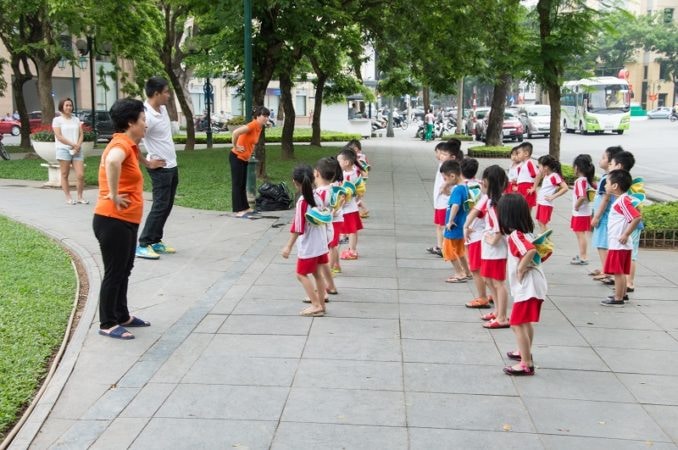
You can pay 50-70k ($2.20 – $3.10) per visit – or about 500k ($22) monthly – at a cheap gym and get fully functional equipment, but it may be a bit more crowded and sweaty than you like. Most – but not all – lack air-conditioning, which is not ideal in a Vietnamese summer.
A higher end gym – replete with air-con, uniformed staff, state-of-the-art equipment, and smaller crowds – can cost a fair bit more. Most will charge 1-2 million ($44 – $88) per month, but they usually ask you to pay upfront for a whole year. Prepare to pay anything between 10-25 million ($440 – $1100).
Visa
Vietnam’s immigration policymakers are notoriously capricious – the regulations frequently change overnight with no notice given. As such, it’s difficult to estimate what the costs will be like in 2022 and beyond.
In all likelihood, you will need to work with a visa agency who can handle all the red-tape and loopholes you need to stay in the country legally, and the costs will vary greatly depending on your situation.
With a Work Permit
If you’re able to get a Vietnamese work permit, congratulations – your life just became a lot easier. From there, your company should be able to get you a Temporary Residence Card (TRC), which will allow you to stay in Vietnam hassle free for the next year and a half or so.
You may need to pay 1.15 million ($50) or so for your first visa, but from there it’s smooth sailing.
Without a Work Permit / on a tourist Visa
If you’re living in Vietnam but not working – say you’re a retiree or a digital nomad, or stuck in the unenviable (and illegal) position of working for a company that refuses to pay for your work permit – things will get more complicated. You will likely need to leave the country every 3 months on a “Visa run” to the cheapest destination available.
A lot of visa companies will offer a package where they book you a return flight to Thailand and handle all your paperwork for your new visa for around 5.7 million ($250). A cheaper option is to take the bus to Laos or Cambodia (depending on your location), but this is hardly pleasant.
Note that as of August 2021, all international travel remains shut down except for certain circumstances, so border hopping and Visa-runs are no longer an option. Most of the expats permanently on tourist visas have already been made to leave the country.
It is yet to be seen if this will remain an option once the world opens up again.
Phone
Phone calls, texts, and data are probably much cheaper than what you are used to. It’s uncommon to spend more than 100k ($4.40) per month on your phone plan, and it’s often much less than that. The prices vary somewhat between providers, with Viettel being one of the more expensive but higher-quality choices.
Internet
Like much of East Asia, the internet in Vietnam is cheap and relatively fast. A typical plan costs between 100-300k ($4.40 – $13.20) per month, and offers speeds over 20MB/s with unlimited data. Unfortunately, you will not be given much choice in provider – you will probably be stuck with whichever provider is used by the property you rent.
Cleaning
As in most developing countries, labour in Vietnam is cheap; if you don’t feel like cleaning your own house, you can hire a cleaner for a low cost and without too much hassle. Costs will vary between individuals, but it would be unusual to spend more than 150k ($6.60) per session.
Travel
Virtually every region of Vietnam has something worth visiting, so you may well want to incorporate tourism into your budget. This is, like most things in the country, eminently affordable.
Plane, Bus, or Train?
Vietnam is a deceptively long country – a car trip from north to south takes over 2,000 kilometers – so air travel is essential for long-distance travel on all but the tightest of budgets. A one-way flight from Saigon to Hanoi, under normal circumstances, costs about 1,200k ($52.70), and shorter flights are generally cheaper.
For shorter distances, the bus is your main option. The bus from Saigon to Da Lat (a popular getaway for both locals and expats) is a 6-hour journey, costing between 200-300k ($8.80 – $13.20) each way. These buses are generally well-equipped for long journeys, being fully air-conditioned and offering beds instead of seats.
For another 100k ($4.40) or so, you can also get a “limousine” service, i.e a ride in a smaller and more comfortable van.
Vietnam also has trains running throughout the country, offering more comfort than a bus, but at a much higher price point. A train from Hanoi to Da Nang could cost you over a million ($44) – only scarcely cheaper than a flight.
I’d recommend taking the train if you need more comfort than a bus but are carrying more luggage than you can bring on a plane – otherwise it’s probably the weakest of the three options.
Hotels and Hostels
The main form of cheap accommodation for locals in Vietnam is the Nhà Nghỉ – literally “rest house” – which you will find anywhere you care to look throughout the country. While far from luxurious, they offer private rooms, air-conditioning, and double beds.
A night at a nhà nghỉ usually costs between 200 and 300k ($8.80 – $13.20) , although price will vary with quality.
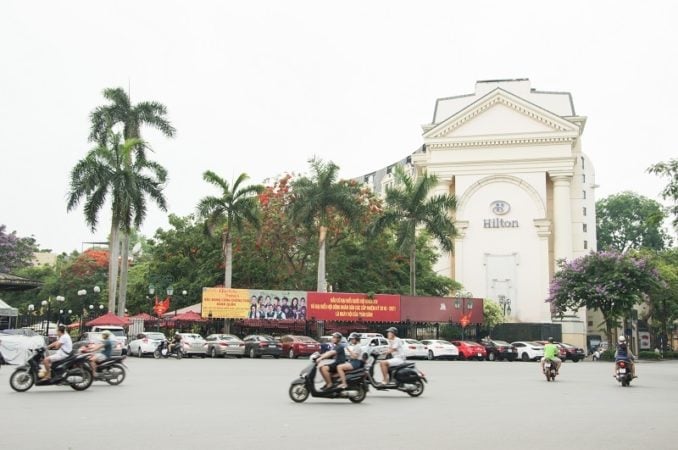
That said, the nhà nghỉ isn’t for everybody. They typically have hard, old-fashioned wooden beds which are a nightmare if you’re used to a soft mattress. You can also find western-style hostels and hotels in tourist areas.
Hostels are fairly cheap, costing between 150-400k ($6.60 – $17.60) per night depending on quality, whereas upscale hotels can reach first-world prices in some areas, upwards of 2 million ($88) per night.
Haircuts & Cosmetics
Men’s Haircuts
You can get a side-of-the-road men’s haircut for less than 30k ($1.30) if you’re on a budget, but fancier options are available too; other more upscale salons will offer a haircut, hair wash, face-massage and shave combo package for 80-150k ($3.50 – $6.60).
I wouldn’t recommend spending much more than that – you might get a more fancy location but the quality won’t change too much.
Women’s Haircuts
As in much of the world, women can expect to spend a bit more on hair care than men. A haircut at a regular Vietnamese salon ranges from 100-300k ($4.40 – $13.20) depending on quality, although prices can go much higher at fancier locations, between 500k to 1 million ($22 – $44).
Hairwash
Hairwashes are cheap enough to be a regular thing if you want them to be – you can get a reasonably high quality hair wash and face massage combo at a Vietnamese salon for no more than 30k ($1.32). More expensive options are available, but it’s not clear if the quality is any higher.
Massage
Like the rest of South East Asia, massages are affordable and popular among both expats and locals. A foot massage at a parlour costs between 150k ($6.60) and 300k ($13.18), while an hour-long full-body massage costs between 400k to 1 million ($17.60 – $44) depending on quality and location.
A cheaper option, if you’re willing to skip the “spa experience,” is a home massage, which can go down to 250k ($11).
International Schools
For those bringing their children over, an international school is a likely necessity if you want your child to receive an English-language education. This, unfortunately, is not cheap.
When researching international schools, it is important to keep in mind that the term “international school” is used somewhat differently in Vietnam than in many countries.

There are plenty of “international schools” throughout the country that almost exclusively teach local Vietnamese students – they are, in effect, more expensive private schools that offer a bilingual curriculum and use the name “international school” as a way to amp up their status.
If you want a genuine international school, complete with qualified foreign teachers, expect to pay a lot. A name-brand school like the United Nations International School costs between 290 million to 710 million ($12,750 to $31,200) per year depending on age level. While this is certainly more expensive than average, the cheaper options aren’t too much better.
In any case, you shouldn’t expect to be paying less than 200 million ($8,800) for primary school to 600 million ($26,500) for high school.
This may well be higher than your yearly salary – sorry about that. One possible exception is for qualified teachers – many international schools offer free tuition for their teacher’s children. If you’re a teacher this may well be the only way this becomes affordable.
Language classes
I encourage anyone who lives in Vietnam to at least try to learn the language. This is made substantially easier by the myriad centres, classes, and tutors you can find in any town or city. Group classes are eminently affordable – it’s often no more than 100k ($4.40) per class.
A private tutor, while recommended, comes with a higher price tag, usually around 250-300k ($11 to $13.20) per hour.
So How Much Does It Actually Cost To Live Here?
As mentioned earlier, there’s no one figure I can give you for the exact cost of living in Vietnam – there are too many variables.
How much can you tolerate Vietnamese food? Do you need to live in a house, or can you tolerate an apartment? Are you bringing children? Do you need foreign health insurance? Do you need a cleaner or can you do it yourself? How often will you be travelling? Will you be living in a big city, regional city, or in the countryside?
In brief, however, I can put the costs like this.
10-25 Million ($440 to $1100) Per Month: Life as a Lower-Middle Class Vietnamese
It is indeed possible to live on 10 million per month, but you probably won’t be saving very much, and you probably won’t be particularly comfortable. You will have to adapt to an exclusively Vietnamese diet – not that there’s anything wrong with this.
You will probably live in a small-ish studio apartment or sharehouse. You may need to cut down on some daily-pleasures such as coffee, but not by too much.
25-40 Million ($440 to $1760) Per Month: The Standard Expat Experience
Between 20 and 40 million per month you can enjoy most “foreign comforts” without needing to think too hard about how much they cost.
You can get pizza or Indian food on a regular basis, although probably not every night. You can get a nice apartment and hire someone to clean it for you. You can ride a bike that’s more than just the cheapest option available to you. You can go to bars instead of Bia Hơis. You can travel throughout the country fairly regularly.
You could even put some money away on the side, although you’re not going to be rich any time soon. Overall your consumption will be similar to or higher than that of a middle-income childless man or woman in the west.
40-80 Million ($1760 to $3500) Per Month: Expat Deluxe
If you make more than 40 million you can start getting pretty decadent. You can afford your own house in a small city or a luxury apartment in a big one. Food, alcohol and coffee are cheap enough for you to never really think about how much they cost.
Unless you have a particularly expensive hobby (or addiction) you’re likely to save a large portion of your income without even thinking about it. You will have money left over to travel comfortably within South East Asia.
80 Million+ ($3500 +): You Should Probably Be Saving
On more than 80 million per month, there is basically nothing you need but can’t afford. You will be struggling to spend more than half your income, meaning you should consider how and where to save the rest. The only exceptions are for those who feel driven towards luxury goods (Expensive bikes! Cars! Holidays in Europe!) or those with families. Your level of consumption will be comparable to someone making low 6 figures in a city in America. Life is good.

